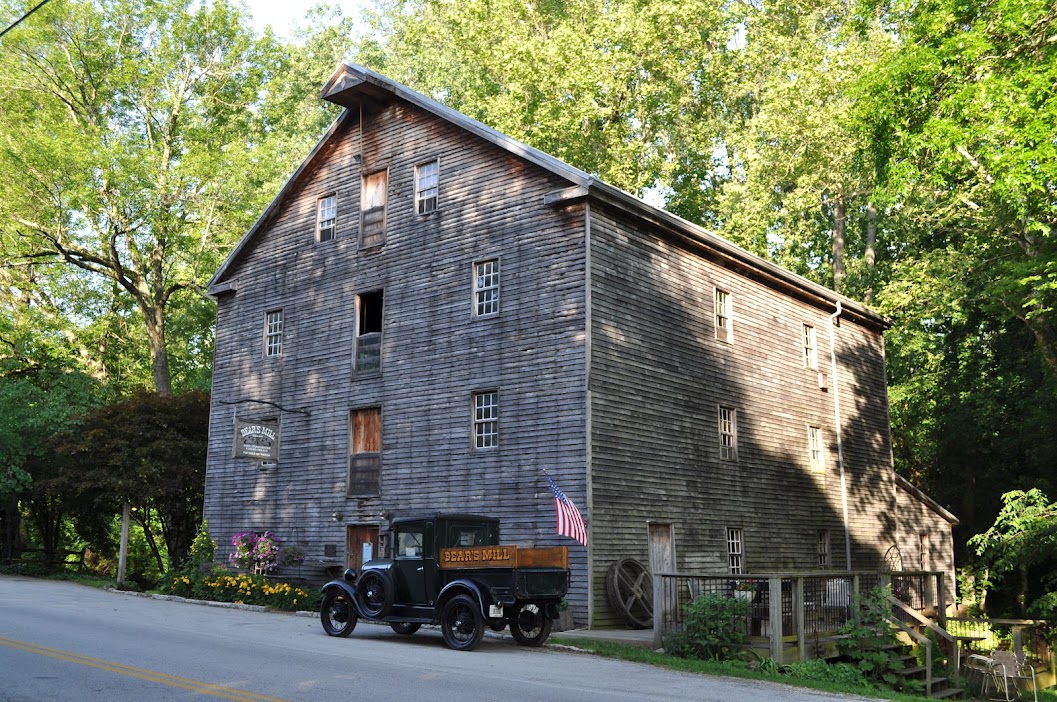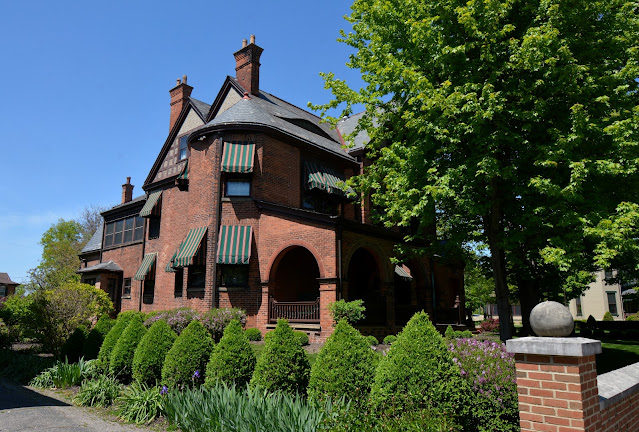The John B. Tytus House is a historic house in Middletown, Ohio. Built in 1865, it was the home of John Butler Tytus (1875-1944). It is a three-story masonry structure, built out of red brick. It has a stylistically eclectic set of architectural features that includes rounded arches in the Romanesque style, half-timbered gable ends in the Tudor Revival style, and an eyebrow dormer.
After graduating from Yale in 1897, Tytus worked for a short time in his father's paper mill, then in a bridge construction company in Dayton, Ohio. On a visit to the American Rolling Mill (later Armco), Tytus noticed the laborious hand processes involved in making a sheet of strip steel. He was soon employed by Armco, here he developed skills as an engineer and learned the manufacturing process well. Observing that efficiencies of manufacturing could be realized by being able to continuous feed hot steel through a rolling process, he set about to create such a process in 1921. By 1924 his process was sufficiently developed that the company built a new plant implementing it. The plant was an immediate success, and the process was soon widely adopted by other steelmakers. Tytus became a vice-president of Armco and received that company's Distinguished Service Award in 1926, the f i r s t person awarded it for something other than heroism or lifesaving. In 1935, the American Iron and Steel Institute presented Tytus with the Gary Memorial Award, the highest honor in industry, for his outstanding achievements.
House was posted to the National Register of Historic Places on May 27, 1975. GPS: 39.51286°N, -84.40891°W.
After graduating from Yale in 1897, Tytus worked for a short time in his father's paper mill, then in a bridge construction company in Dayton, Ohio. On a visit to the American Rolling Mill (later Armco), Tytus noticed the laborious hand processes involved in making a sheet of strip steel. He was soon employed by Armco, here he developed skills as an engineer and learned the manufacturing process well. Observing that efficiencies of manufacturing could be realized by being able to continuous feed hot steel through a rolling process, he set about to create such a process in 1921. By 1924 his process was sufficiently developed that the company built a new plant implementing it. The plant was an immediate success, and the process was soon widely adopted by other steelmakers. Tytus became a vice-president of Armco and received that company's Distinguished Service Award in 1926, the f i r s t person awarded it for something other than heroism or lifesaving. In 1935, the American Iron and Steel Institute presented Tytus with the Gary Memorial Award, the highest honor in industry, for his outstanding achievements.
House was posted to the National Register of Historic Places on May 27, 1975. GPS: 39.51286°N, -84.40891°W.














No comments:
Post a Comment